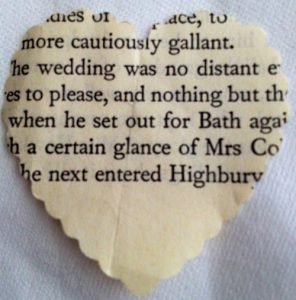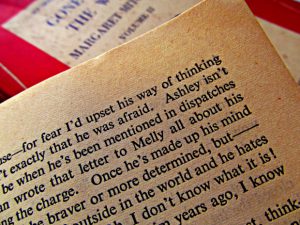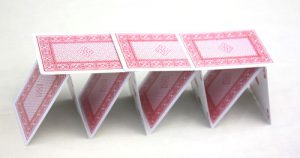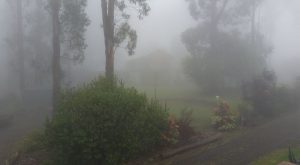

Month: November 2016
Welcome to the Busybird blog, where you can find helpful articles, updates, industry news and more. Make sure you stay up to date by signing up to our newsletter below.
The Publishing Process
November 24, 2016 Have you ever wondered about the work that goes into transforming a manuscript into a book once a publisher accepts it?
Have you ever wondered about the work that goes into transforming a manuscript into a book once a publisher accepts it?
It’s not as simple as the publisher saying, Hey, that’s great! and then sending it off to be printed. The publisher will put the manuscript through a rigorous process, usually retaining (either on staff, or subcontracting) different professionals to oversee each step. (A small publisher might have people doubling up on roles, e.g. an editor might perform the structural and copy edit.) The publisher will also set a timetable with you, giving you deadlines to hit for each step.
Here now is a breakdown of those steps …
Structural Editing
This looks at the story as a whole and how it functions. Are the plot and subplots believable? Do they need to be rounded out or pared back in some way? Are the characters fully realised? Is the writing sound throughout? Is it overwritten in passages? Underwritten? Unclear? Are their phrases that you rely on that become repetitive? Etc. The structural edit will examine how the manuscript functions (as a whole) on multiple levels (e.g. story, character, prose).
This is when you’re given the mandate to revise. You’ll either get feedback in a separate document, or you’ll get feedback in a separate document and your story marked up in Word. They’ll usually ask that you make your revisions in Track Changes, so they can see what you’ve done.
As an aside, it’s your responsibility to get permission for any external material you might’ve used, e.g. passages from another book, song lyrics, images. The publisher won’t do this. Nor will they indemnify you if you have used something without permission and get in trouble.
A structural edit is pivotal. Much (if not all) of this stuff you won’t see for yourself because you’ll have no objectivity in evaluating your own work – especially if you’ve gone over it so often that the words and content have lost all meaning.
Copyediting
Copyediting looks specifically at the grammar, punctuation, spelling, and – if examples remain after the structural editing – if the writing itself is clear. You’d be amazed at the quantity of issues a good copyeditor will pick up.
Publishers (and journals) will also apply their own House Style. House Style is how they like things formatted, e.g. do they use an en dash (–) or an em dash (—)? For dialogue, do they use ‘single quotes’ or “double quotes”? With spelling, do they prefer ‘realise, socialise, terrorise’, etc., or ‘realize, socialize, terrorize’, etc.?
The list behind any publisher’s or journal’s House Style can be comprehensive, and exists to bring uniformity to their publications.
At this point, we’re still working in a Word document.
Note: Both the structural edit and copyedit may be repeated until a desired outcome is achieved.
Layout / Design
A designer will be retained to lay the manuscript out in InDesign – the industry-standard software for book formatting. This is what gets books looking the way they do (just in case you thought people were simply slapping things together in Word or Microsoft Publisher).
A cover will also be designed, (using, as a foundation, a brief the editor has supplied about the book’s content). The author might have some input (and will be able to offer feedback on drafts), but the publisher has a much better understanding of what works and what doesn’t in the market.
Proofing
You’ll be sent a laid-out version of your book (usually as a pdf) to look over. This is not the stage to start rewriting or adding things. All that should’ve been taken care of during the editing. Here, you’re looking only for things that might’ve slipped through (e.g. typos) or issues the layout might’ve introduced (e.g. perhaps you used internal headings throughout chapters, and several have been swallowed up into standard text).
The publisher will also retain a proofreader – somebody who hasn’t seen the document previously (fresh eyes!) – to perform a proofread. The proofreader is the final safeguard in corrections.
Off to Print!
This is when your manuscript becomes a book.
You can see how much work goes into taking a manuscript – no matter how polished you believe it is – and transforming it into a finished product on every level: structurally, the copy, and the design (the cover, and the internal look of the book).
It’s also worth thinking about if you’re considering self-publishing, as too many self-published authors do believe it’s just a case of sending their work to a printer, and away they go. Don’t worry about the content, copy, or look – it’ll wow readers regardless. No. God no. If it was that easy, that’s what everybody (including traditional publishers) would be doing.
Self-publishing is a great alternative. New technology ensures that it’s inexpensive, that you’ll end up with a product indistinguishable from books coming out of the big multinational publishers, and it’s easy to replicate everything they would do for an author.
But if self-publishing is something you’re going to do, make sure you put the same level of work in to do it right.
Be just as thorough as a traditional publisher is.
The Fetishisation of the Printed Form
November 17, 2016 I watched a discussion at the Independent Publishing Conference where a panellist said he didn’t believe in the ‘fetishisation’ of the print book as a reason readers preferred it over the ebook. This means he didn’t believe people enjoyed the print book for things like its texture, the smell of its pages, the shape of the words, etc.
I watched a discussion at the Independent Publishing Conference where a panellist said he didn’t believe in the ‘fetishisation’ of the print book as a reason readers preferred it over the ebook. This means he didn’t believe people enjoyed the print book for things like its texture, the smell of its pages, the shape of the words, etc.
Yet most readers maintain their allegiance to the print book. That’s worth thinking about given it wasn’t too long ago many thought the emergence of the ebook would eliminate the need for the print book. That hasn’t happened. Ebooks spiked early with their sales, then hit a plateau. The print book remains as strong as ever.
Why?
The ebook is a form of convenience. From a practical standpoint, we’re don’t need to cut down trees to print ebooks. They’re cheaper and you can carry numerous books on your reader, rather than have to lug around enough books to give you a hernia. You can order any books – even ones that would be difficult (if not impossible) to obtain in print – and have them delivered to your reader instantly. If you have readers across multiple platforms (e.g. on your tablet, on your phone) they’ll automatically synchronise where you’re up to, so you’ll never lose your page regardless of where you’re reading. These are all undeniable advantages.
But readers are still faithful to the vehicle – in this case, the printed form.
And, of course, a fetishisation exists, because fetishisation exists in everyday society. Where would you enjoy a movie most – in Gold Class, IMAX, a normal cinema, watching a BluRay, a DVD, on your tablet, or on your phone? If fetishisation didn’t exist, it wouldn’t matter where you watched it, because you’d only be concerned about the content. What would you rather drive – a Ferrari, a Ford, or a KIA? If you were going out to a wedding, do you dress in your finest, in everyday casual-wear, in a tracksuit, or in your pyjamas? If you wanted to enjoy an art exhibition, would you go see Rembrandt or Joe Blow?
These examples can go on. They exist in every level of life – material, cultural, and functional. It matters to us how things look. If it didn’t, we’d dress the same, look the same, and have the same tastes. We wouldn’t lament cloudy days and revel in sunny days. Art (in any form) wouldn’t exist because we couldn’t possibly have an appreciation for it. There would be nothing but pragmatism. Everything else would only exist as a means to an end.
But appearance – and particularly beauty – appeal to us.
Why should books be any different? This is why people will collect different editions with new covers, new sizes, new looks – that fetishisation of the form matters. It gives us a tactile connection to the physical form, just as we can have tactile connections to locations, to sounds (like songs), to smells, etc. It’s about how the world resonates with us, how we interpret it, and what that interpretation means to us.
Surely, this is something the manufacturers of ebook readers recognise, given they continually strive to make ebooks look more like printed books. They try to duplicate paper colouring, the resolution of fonts, and the cosmetics behind the layout. They’ve even gone as far now to create the illusion of a page being turned. If the fetishisation of the printed form didn’t matter, why would the manufacturers bother? Why wouldn’t it just come down to electronic text on an electronic page? The answer is obviously it does matter and manufacturers are trying to duplicate that very real connection readers develop – and nurture – with the printed form.
Justifying Structure
November 10, 2016 How are you going to tell your story?
How are you going to tell your story?
Most authors won’t even think about it. They’ll just sit down and write, and let their story take its own form. It doesn’t have to be any more complicated than that. And, lots of times, it feels the natural way to do it, so why overthink it? If it’s natural, it must be right.
Right?
No.
An inexperienced author might use reams of exposition whenever they introduce a new character. This may be natural to them. Does that make it right? To them, maybe, because this is as much as they know. But, in all likelihood, the overblown exposition will disengage most readers for whatever reason – because it bores them, because it shatters their suspension of disbelief, because it’s superfluous, and on this list goes.
Whilst the initial choice behind the structure of your story might be instinctive, it’s worth examining whether that choice (or those choices) have merit and will help or hinder your story being the best possible story it can be.
Is your story going to be first person, second person, third person, or third person omniscient? Why are you using that POV? Think about it. Think about the benefits it gives you and how it serves the story. Does the POV shift? If so, why? A story might transfer from third person (symbolising the protagonist’s disconnect from the world around them) to first person (because now the protagonist has gained a self-awareness). Does it shift from past tense to present tense to show the protagonist becomes hyper-aware of the world around them as it’s unfolding?
It’s great to feel as if your natural choices, as if your instinctive choices, will guide you to produce the best narrative possible, but those instincts are usually informed by knowledge and experience, just the way a top doctor might be able to look at a patient and – despite limited symptoms exhibited – diagnose them intuitively. The doctor isn’t prescient. They might have a lifetime of experience and education funnelling into their interpretation of what’s happening to produce – or, at the very least, complement – that single moment of intuition which produces that diagnosis.
Too many authors want to be innovative or complicated unjustifiably. They employ POV shifts, tense shifts, structural shifts (e.g. flashbacks), etc. The question always is the same: Why? It’s fine to experiment. Experimenting helps us learn by doing. But usually, the best course is the simplest. If you plan to deviate, then bring it back to that question: Why? Examine it. See if it works for you and, if it does, work out why it works for you. If it doesn’t, find out why it doesn’t.
Everything should have a reason for why it’s done outside of it simply being a natural choice. A reader will appreciate these decisions if there’s a justification and purpose behind them, even if the reader doesn’t understand that from a technical standpoint. It’ll engage and stimulate them and their interpretation of your writing. But when these changes exist arbitrarily, with no real grounding or motivation behind them, all that’s likely to happen is you’ll have your reader saying, Huh?
Inside Karma
November 3, 2016 Arriving Early
Arriving Early
Except for a gang of cockatoos screeching and catcalling from the treetops, I was alone. A mist had begun to settle, blurring the contours of the new growth eucalypts and the blackened trunks, enclosing me in a thick, white cloud. Dotted among the man ferns and lilly pilly borders, a cluster of corrugated huts sat dark and empty.
It wasn’t quite wilderness but there was something otherworldly, dreamy and a little bit fairy tale about the atmosphere, as I lingered in the car park trying to work out where on earth reception was (I was probably standing right under a sign with big red arrows).
That was our first ten minute writing exercise. I was sitting at a ‘U’ shaped table among a small group of writers, wood fire blazing, rain battering the windows, a mound of chocolates and mints and a brown paper gift bag in front of each of us. Such a nice way to start writing. The scary part wouldn’t happen until later.
Blaise and Les have run several retreats now and the program is well designed. While the retreat focuses on memoir, the workshops are equally applicable to fiction and most other types of creative nonfiction. Nonetheless, I couldn’t help but feel apprehensive when I saw the theme for this retreat spelled out in big black letters: No More Excuses.
Writer’s Block
To kick things off Blaise asked us to make a note of our roadblocks, those issues we have when we sit down to write that suddenly make scrubbing the floor by hand and cleaning grout seem so appealing. Naturally I was convinced that my roadblock was the worst, and I was sure it was incurable. Even though writer’s block is a common complaint, there is no such beast according to Les and Blaise. By lunchtime Saturday I had acquired a whole new insight into the bane of my writing life. The thing I had been bemoaning for all those years was actually a structural problem, and there absolutely is a cure.
My worst writing issue addressed on the first morning. Best workshop ever!
Dinner Time
Despite all the naughty treats, mealtimes were a delight. As a vegetarian, I was expecting dishes where I could pick out the meat, but my meals were gourmet creations: spicy pumpkin and pistachios, stuffed zucchinis and salads flavoured with red currants, toasted almonds and pomegranates. My dishes gave several of my fellow carnivores a few green-eyed moments. Lucky for me, Karen, the proprietor and chef, likes to make all her guests feel special, even the difficult ones, and lucky for the carnivores there was plenty to share around (I was quite prepared to fight for my food, and it looked as if some of the others would too).
The Scary Part
Saturday afternoon: back in the barn, a second-storey room with floor-to-ceiling windows and a hardworking wood heater, Les was handing around the five hundred word memoirs we had all had sent Blaise the previous week. What had I done? I’d emailed ‘The Lost Little Cowgirl’, a piece beset with all the problems that typically weigh down my creative efforts. It was another story-without-an-arc. Just an experiment. What was I thinking?
Every person in the room had an important and fascinating story to tell: from a young mother fleeing the Black Saturday bushfires to a deliciously creepy tale about an anaesthetist tempted to go rogue. Feeling like I didn’t belong, I hunkered down in my seat and tried to hide my nerves. Colleen was the first to comment: ‘It works once you know it’s a story within a story.’ I was touched. The whole group engaged with my strange little piece with curiosity, insight and a sense of humour. Even the scary bits turned out to be fun.
After each critique, Les returned our writing with a professional edit attached. And there, among the suggestions, four comments down, was the nugget I had been searching for. Maybe it would not make a full arc, but it would definitely raise its belly off the ground.
Afterwards
I had wondered what it would be like to spend a whole weekend immersed in my writing and I conjured many scenarios in the weeks before the retreat. What I didn’t expect was to feel so snug as rain and mist sealed off Karma. It was like an island somewhere slightly to the north of reality. And now, as I take my mind back, I have been surprised to find that there are actual, concrete solutions to the slippery swag of issues I lugged up the mountain.
Workshops and retreats are one of the best ways I know to build motivation and momentum and, little by little, I can feel myself edging closer to that place where there will be, No More Excuses.
P.S. A big thank you to everybody for making the weekend so special and an extra thank you to my two lovely nest mates, Liz and Colleen.
– Lisa Roberts
